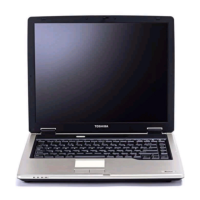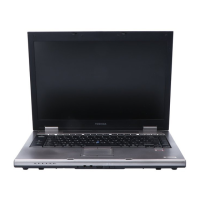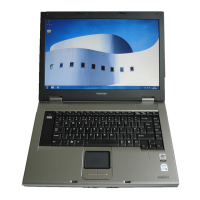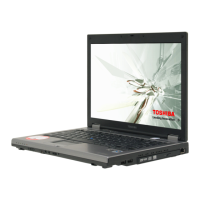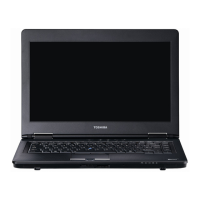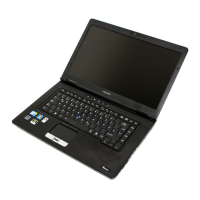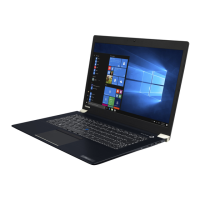
Do you have a question about the Toshiba Tecra X40-D and is the answer not in the manual?
| Storage | 512 GB SSD |
|---|---|
| Operating System | Windows 10 Pro |
| Processor | Intel Core i5 or i7 |
| Display | 14" FHD (1920 x 1080) |
| Graphics | Intel UHD Graphics 620 |
| Ports | HDMI |
| Wireless | Wi-Fi 802.11ac, Bluetooth 4.2 |
Provides basic information and recommendations for initial computer use.
Details how to connect the AC adapter for charging and operation.
Guides on how to turn on the computer, including power indicator status.
Explains the Windows startup screen and initial system setup.
Details modes for turning off the computer: Shut Down, Sleep, Hibernation.
Explains how to use Sleep Mode to pause and resume work.
Explains Hibernation Mode to save system state to storage.
Details how to start Hibernation Mode and configure it.
Covers creating recovery media and restoring the system.
Guides on restoring software using created recovery media.
Explains how to restore software from the internal recovery partition.
Details all visible components on the front when the display is open.
Explains how to use touch screen gestures like tap, hold, pinch, rotate, and slide.
Details touch pad gestures like tap, two-finger tap, pinch, and scroll.
Introduces keyboard layout, keys, and the CAPS LOCK indicator.
Lists function keys (F1-F12) and their combinations.
Explains fingerprint sensor enrollment, recognition, and features.
Provides guidelines to avoid sensor damage and improve recognition.
Covers battery pack, RTC, care, and charging procedures.
Explains how to monitor capacity and maximize operating time.
Details automatic sleep/hibernate, power on password, intelligent power, battery save, panel power, and low battery hibernation.
How to set, change, delete, and manage user passwords.
Covers supervisor passwords and starting the computer with a password.
How to run and configure settings using tabs like General, Sleep, Display, Boot Options, Keyboard.
Explains USB Sleep and Charge feature for compatible devices.
How to enter and use the BIOS setup utility to change settings.
Guidelines for identifying and resolving problems efficiently.
Basic checks for common issues like peripherals, cables, and drivers.
Questions and steps to help identify the root cause of issues.
Guidance on resolving software or disk-related problems.
Checks for hardware configuration and setup problems.
Addresses keyboard unresponsiveness, program freezing, and startup issues.
Resolving issues with advanced startup options and general hardware/system checks.
Addresses overheating shutdowns, AC power issues, and battery problems.
Resolving BIOS power-on failures and garbled screen output.
Addresses boot failures, slow performance, and media card errors.
Troubleshoots Touch Pad not working, pointer response, and double-tapping.
Addresses mouse pointer response, double-clicking, and erratic movement.
Resolving fingerprint registration and USB device not working.
Troubleshoots USB Wakeup function and sound system problems.
Addresses monitor power, display, and error occurrences.
Troubleshoots LAN, Wireless LAN, Bluetooth, and Face Recognition problems.
Steps to take before contacting TOSHIBA for assistance.
Information on obtaining technical support and visiting the website.



